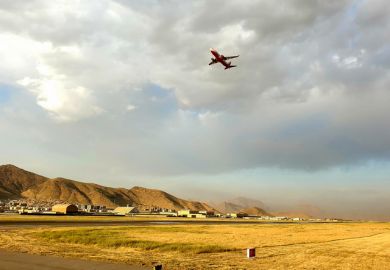Five hundred years ago, on May 20, 1498, Vasco da Gama and his crew cast anchor a few miles north of Calicut in south India. Cautious as he was, he first sent ashore a convict to test the mood of the "natives"; he himself did not step on to Indian soil until May 28.
Da Gama entered European history books as the "discoverer" of the sea route to India. Nothing could be further from the truth. There had already been centuries of contact with the Middle East and east Africa. All that da Gama can claim is that he was the first to piece together the navigational experience of centuries and travel all the way from Portugal via the Cape of Good Hope to the south Indian coast. For the last lap from the east African port of Malindi to Calicut he relied on a pilot who knew the route.
Da Gama was glorified and mythologised soon after his death: Portugal's national epic, The Lusiad (1572) by Luis Vaz de Camoes, is a narration of da Gama's life, given Christ-like dimension. The rest of Europe chose to applaud Christopher Columbus who had set out with the same intentions as da Gama six years before.
Though he continues to be a presence in European consciousness, da Gama's historical personality remains pallid. Sanjay Subrahmanyam attempts to infuse more character into him in this extensively researched study of da Gama's life and the legends that enveloped it. The book's epigraph (from Charles E. Nowell) indicates the author's intention: "Unlettered, brutal, and violent, (Vasco da Gama) was nevertheless loyal and fearless. For some assignments he would have been useless, but for this one he was made to order. The work lying ahead could not be accomplished by a gentle leader."
Subrahmanyam's efforts to destroy the rather benevolent image of the seafarer and portray him as what he was - brutal and single-minded, cunning, rash and suspicious - succeed without demonising da Gama or the royal court of Portugal that sponsored him. In fact, da Gama comes across convincingly full-blooded with all his human foibles, and set in the wider context of European expansionism and the often insensitively aggressive missionary activity of the early Latin church in India. According to Subrahmanyam, with the coming of the Portuguese the "systematic use of violence at sea" was introduced.
The narrative follows da Gama's three voyages to India right up to his death in 1524 in Cochin. Drawing on the material available in various European languages, and diligently discussing the quality of his sources, Subrahmanyam weaves together a rich, perhaps overly rich, tapestry of greed, national pride and zeal to accomplish the mission. But it seems that the book fails to harness the enormous mass of material and make the narrative tightly argued. All too often it digresses, jumps or repeats itself. Some rigorous editing would have helped. These criticisms are, however, outweighed by the high scholarly merit of this well-timed study.
Martin Kampchen is a visiting scholar,Visva Bharati University, India.
The Career and Legend of Vasco da Gama
Author - Sanjay Subrahmanyam
ISBN - 0 521 47072 2
Publisher - Cambridge University Press
Price - £35.00
Pages - 400
Register to continue
Why register?
- Registration is free and only takes a moment
- Once registered, you can read 3 articles a month
- Sign up for our newsletter
Subscribe
Or subscribe for unlimited access to:
- Unlimited access to news, views, insights & reviews
- Digital editions
- Digital access to THE’s university and college rankings analysis
Already registered or a current subscriber?



